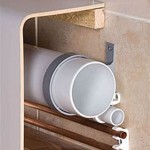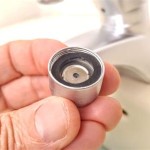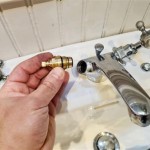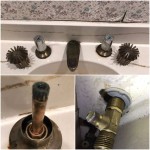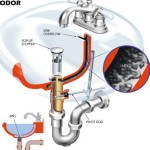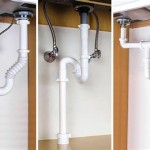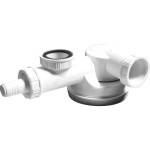How to Fix a Dripping Bathroom Ball Faucet
A dripping bathroom faucet is not only annoying but also wasteful. It can lead to increased water bills and even damage to your bathroom fixtures over time. Fortunately, fixing a dripping ball faucet is a relatively simple DIY project that can be accomplished with a few basic tools and some patience. This article will guide you through the process of identifying the cause of the leak and provide step-by-step instructions on how to repair it.
Identifying the Cause of the Leak
Before diving into the repair process, it's important to understand the potential causes of a dripping ball faucet. The most common culprits include:
- Worn-out washer: The washer is a small rubber ring that seals the faucet spout and prevents water from leaking. Over time, the washer can wear down or become damaged, causing a drip.
- Clogged aerator: The aerator is a small screen-like device at the end of the faucet spout that mixes air with water to create a smooth flow. If the aerator becomes clogged with mineral deposits or debris, it can cause a drip.
- Loose stem: The stem is the part of the faucet that controls the flow of water. If the stem is loose or worn, it can allow water to leak past the washer.
- Damaged O-rings: O-rings are small rubber rings that seal the various parts of the faucet. If an O-ring is damaged or missing, it can cause a leak.
Repairing a Dripping Ball Faucet
Once you've identified the cause of the leak, you can begin the repair process. Here's a step-by-step guide on how to fix a dripping ball faucet:
- Turn off the water supply: Locate the water shut-off valve for your bathroom sink and turn it off. This will prevent water from flowing into the faucet while you work.
- Remove the faucet handle: Unscrew the handle from the faucet body. This may require a small wrench or screwdriver, depending on the type of handle.
- Inspect the washer: Once the handle is removed, you'll see the stem and the washer. Inspect the washer for signs of wear or damage. If it's worn or cracked, you'll need to replace it.
- Remove the stem: Locate the stem nut, which is usually a hexagonal nut located at the base of the stem, and loosen it with a wrench. The stem should then be able to be lifted out of the faucet body.
- Replace the washer and O-rings: If the washer is damaged, replace it with a new one of the same size and type. Inspect the O-rings for wear or damage, and replace them as needed.
- Reassemble the faucet: Once the washer and O-rings are replaced, insert the stem back into the faucet body and tighten the stem nut securely. Reinstall the handle and tighten it securely.
- Turn on the water supply: Carefully turn the water supply back on and check for leaks.
Additional Tips
If you're still experiencing a drip after replacing the washer and O-rings, you may need to replace the entire stem assembly. This is a more complex repair but can be done with the help of a plumber or by following the instructions in your faucet's manual.
To prevent future leaks, it's important to regularly clean the faucet aerator. This can be done by removing the aerator and soaking it in vinegar for several hours. Once the aerator is clean, rinse it thoroughly and reinstall it on the faucet spout.
For particularly stubborn leaks, it may be necessary to replace the entire faucet. This is a more expensive option but may be the best solution if the faucet is old or damaged beyond repair.
Faucet Repairs Fix A Drippy Ball Type Diy

How To Repair A Ball Faucet The Home Depot

How To Repair A Ball Faucet The Home Depot

How To Repair A Ball Faucet The Home Depot

5 Reasons Your Faucet Is Dripping Water How To Fix It

How To Fix A Leaky Ball Valve Faucet

How To Fix A Leaky Faucet Guides For Every Design And Style

How To Fix A Leaky Faucet Guides For Every Design And Style

How To Repair A Leaking Ball Faucet Single Handle

How To Fix A Bathroom Faucet 14 Steps
Related Posts
